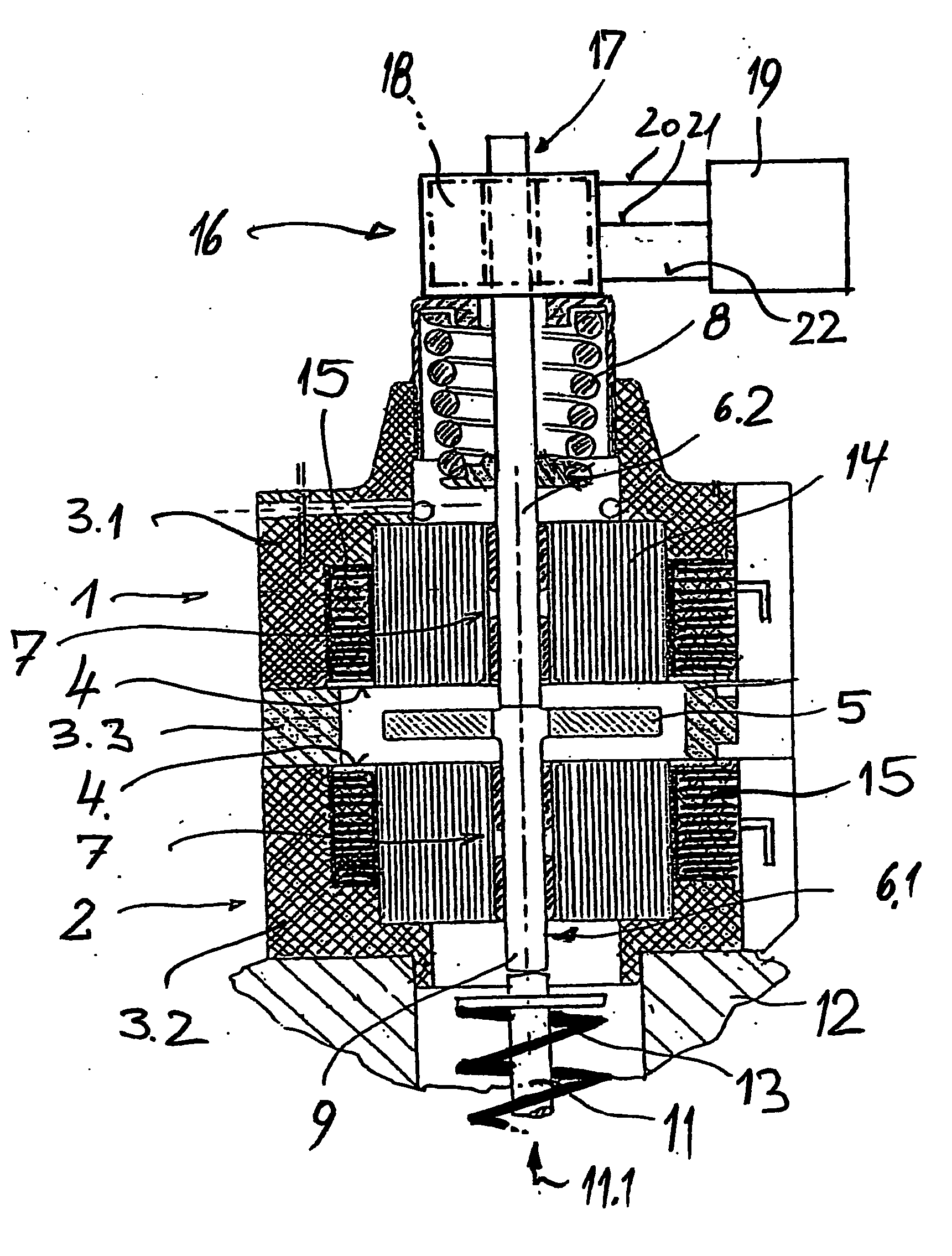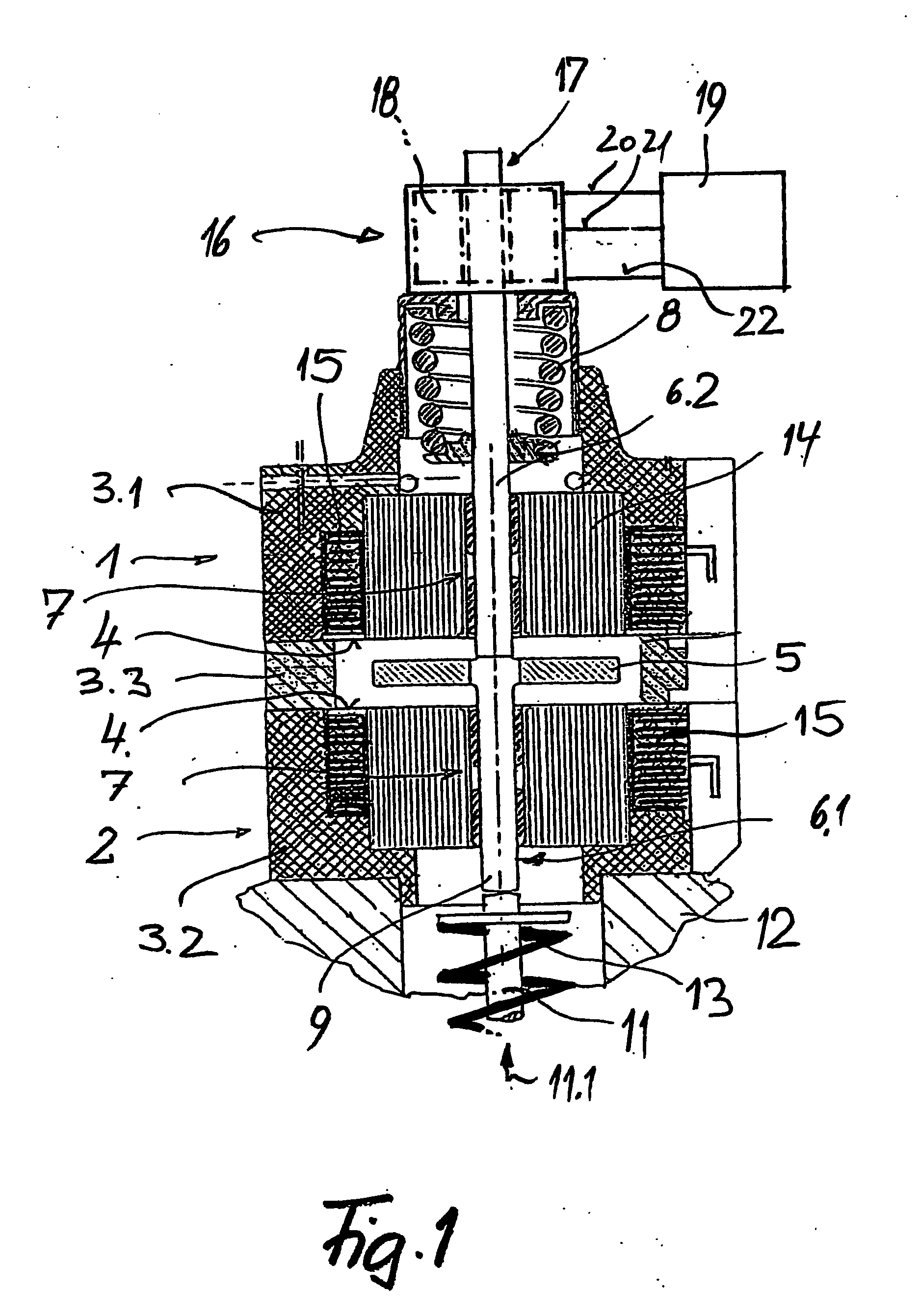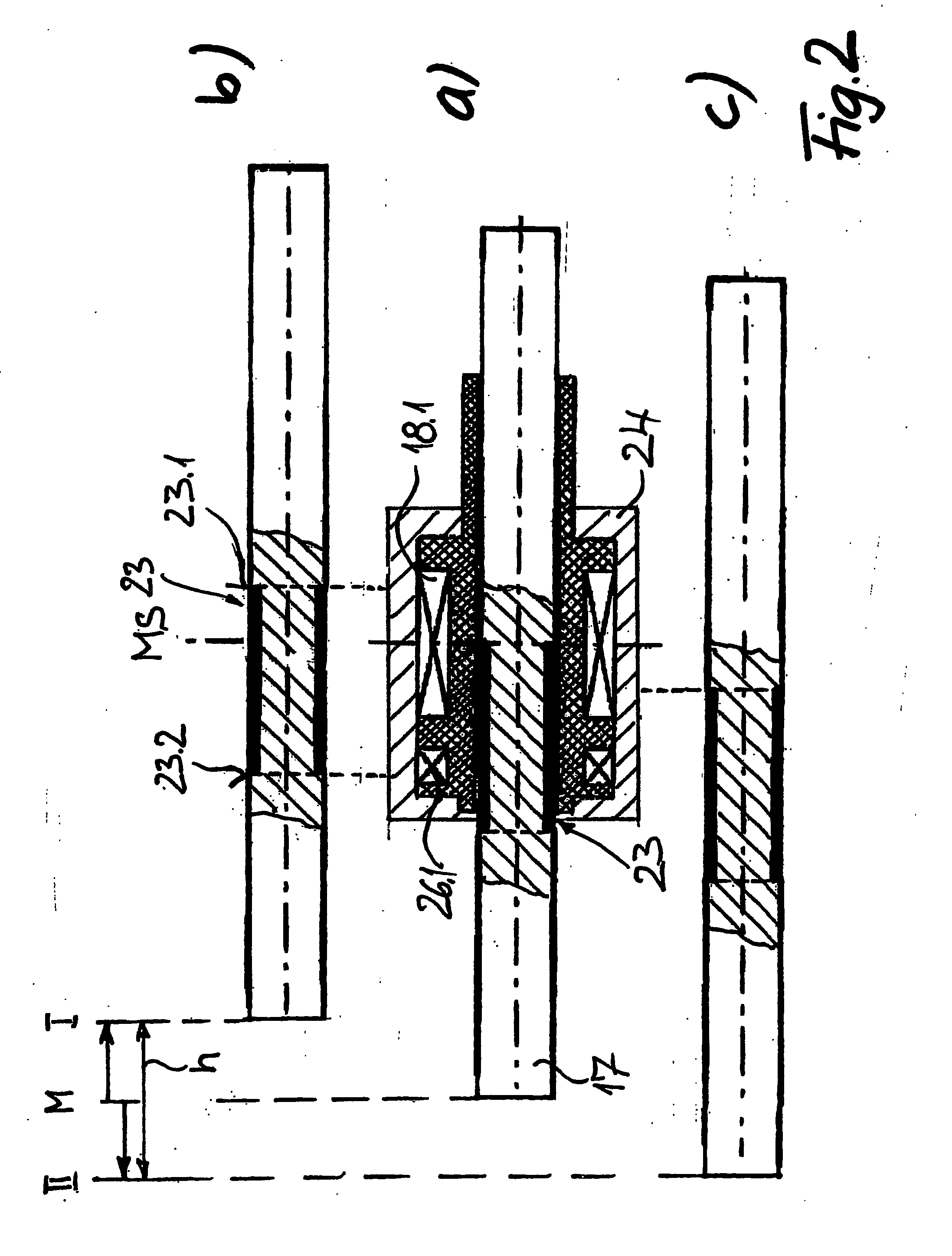Sensor array for detecting the movement of a positioning element moved back and forth using an actuator
a technology of positioning elements and sensors, applied in the field of actuators, can solve the problems that the measurement of movements derived from current and voltage curves at the coils of electromagnets is no longer sufficient, and achieve the effect of increasing the conductor cross section and specific electric resistan
- Summary
- Abstract
- Description
- Claims
- Application Information
AI Technical Summary
Benefits of technology
Problems solved by technology
Method used
Image
Examples
Embodiment Construction
[0029] The electromagnetic actuator shown in FIG. 1 is essentially formed by two electromagnets 1 and 2 that are enclosed by two housing parts 3.1 and 3.27 wherein these two housing parts are spaced apart from one another by means of a housing part 3.3 in the form of a spacer, and are positioned such that their pole faces 4 point toward one another. An armature 5 is arranged in the space enclosed by the spacer 3.3 between the two poles faces 4, and is guided in a guide 7 by means of a guide pin 6.1 such that it can be moved back and forth.
[0030] The armature 5 is connected to a return spring 8 by means of a guide pin 6.2 that is supported on the guide pin 6.1 in the region of the armature 5. The lower free end 9 of the guide pin 6.1 is supported on the positioning element, in this case, for example, on the free end of the shaft 11 of a gas exchange valve that is guided in the schematically indicated cylinder head 12 of a reciprocating internal combustion engine. A return spring 13 ...
PUM
 Login to View More
Login to View More Abstract
Description
Claims
Application Information
 Login to View More
Login to View More - R&D
- Intellectual Property
- Life Sciences
- Materials
- Tech Scout
- Unparalleled Data Quality
- Higher Quality Content
- 60% Fewer Hallucinations
Browse by: Latest US Patents, China's latest patents, Technical Efficacy Thesaurus, Application Domain, Technology Topic, Popular Technical Reports.
© 2025 PatSnap. All rights reserved.Legal|Privacy policy|Modern Slavery Act Transparency Statement|Sitemap|About US| Contact US: help@patsnap.com



